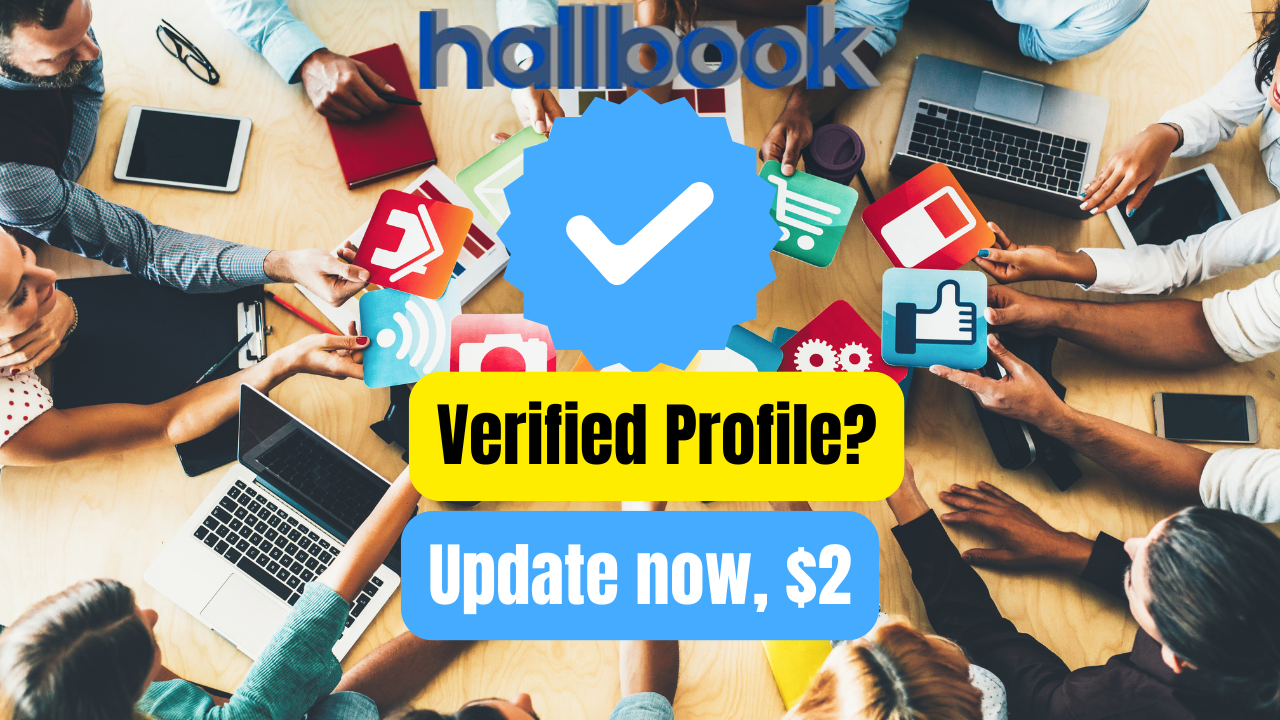Gamification in Marketing: How Brands Are Using Game Mechanics
In a digital world filled with distractions, traditional marketing tactics are often not enough to capture consumer attention. To stay relevant and engage customers in meaningful ways, brands are increasingly turning to gamification—the integration of game mechanics into their marketing strategies. By incorporating elements like points, levels, rewards, and challenges, brands can create more engaging and interactive experiences that not only captivate their audience but also foster loyalty.
In this blog, we’ll explore how brands are using gamification in their marketing efforts and why it’s essential for modern campaigns. Whether you are a small brand or a large enterprise, gamification can be a game-changer in enhancing customer engagement.
What is Gamification in Marketing?
Gamification refers to the use of game mechanics—such as scoring systems, challenges, rewards, and competitions—in non-game contexts like marketing. It taps into the intrinsic motivations that drive people to play games: fun, achievement, social interaction, and competition. In marketing, gamification can turn an otherwise mundane task or interaction into an exciting and rewarding experience.
Key Game Mechanics Used in Marketing:
Points & Rewards: Offering points for completing certain actions or engaging with content.
Levels & Badges: Creating levels or badges that customers can achieve by completing tasks or reaching milestones.
Challenges & Competitions: Engaging users in friendly competition or encouraging them to complete challenges.
Leaderboards: Displaying the best performers and motivating customers to climb the rankings.
These game mechanics help increase participation, drive behavior, and most importantly, build customer loyalty.
Why Brands Are Using Gamification
1. Increased Engagement
In today’s world, consumers are bombarded with marketing messages daily. Gamification provides a way to stand out by creating interactive, engaging content that draws users in. For example, Nike’s NikeFuel tracks users’ activity and rewards them with points and badges. This keeps users engaged, as they strive to complete challenges and earn rewards, turning their fitness journey into a game.
By adding a fun and competitive element to a brand's communication, gamification encourages deeper interaction with your audience. A game marketing agency can help you design these interactive experiences and maximize engagement with your target audience.
2. Boosts Brand Loyalty
One of the main benefits of gamification in marketing is its ability to increase brand loyalty. When customers are rewarded for interacting with your brand—whether it’s through making a purchase, sharing on social media, or completing challenges—they develop a connection and commitment to your brand. Loyalty programs such as Starbucks Rewards use gamified systems to reward customers for frequent purchases, making them feel valued and encouraging them to return for more.
As a game marketing company in Jaipur, we understand the psychological power of rewards and how they can turn casual customers into long-term advocates for your brand.
How Brands Are Using Gamification
1. Loyalty Programs
One of the most common applications of gamification in marketing is in loyalty programs. Companies like Starbucks, Sephora, and Amazon have gamified their loyalty programs by offering points or status levels that customers can unlock. The more they engage with the brand, the more they earn. This increases customer retention, incentivizes repeat purchases, and keeps customers engaged with the brand.
For example, Sephora’s Beauty Insider Program allows members to earn points on every purchase, which can later be redeemed for rewards. Customers also level up as they reach different spending tiers, unlocking more exclusive rewards.
Gamification in loyalty programs taps into players’ intrinsic motivation to collect rewards and achieve levels, keeping them engaged over a long period.
2. Social Media Challenges
Brands are also using gamification to engage their audience on social media through challenges and interactive campaigns. A great example is the Coca-Cola “Share a Coke” Campaign, where consumers were encouraged to find bottles with their names on them and share photos on social media. The brand turned this simple act into a game by offering prizes for the best social media posts and creating a social media leaderboard to boost participation.
Through these challenges, Coca-Cola was able to generate buzz and increase engagement, while simultaneously promoting brand awareness.
3. Interactive Experiences
Another area where gamification shines is in interactive experiences such as quizzes, contests, or games on brand websites or mobile apps. Brands like Duolingo and McDonald’s have gamified their user experiences to create fun, immersive content that users can enjoy while promoting brand loyalty.
For instance, McDonald’s used a gaming app in partnership with the popular Monopoly game. The app allowed customers to collect virtual tokens and win prizes, which incentivized them to visit more frequently to increase their chances of winning.
4. Personalized Gaming Experiences
Some brands go even further by creating full-fledged gamified experiences around their products. A great example is Taco Bell’s “Taco Bell Arena” where customers could play a series of challenges to unlock special discounts and rewards. By creating a dedicated app experience, Taco Bell made it possible for users to customize their gaming experience based on their preferences. This level of personalization increases customer engagement and creates a stronger bond between the brand and its audience.
Gamification: A Key to Long-Term Success
Gamification in marketing is more than just a passing trend; it’s a way for brands to create deeper, more meaningful connections with their audience. When implemented correctly, it can not only increase engagement and customer loyalty but also drive sales and improve brand visibility. However, it’s crucial for brands to ensure that the game mechanics they use align with their overall marketing goals and brand identity.
A game marketing agency can guide you through the process, helping you design gamified strategies that resonate with your target audience, build long-lasting relationships, and boost conversions.
If you’re a brand looking to incorporate gamification into your marketing strategy, partnering with a game marketing company in Jaipur can help you navigate the complexities of game mechanics and create a fun, engaging experience that keeps your customers coming back for more.
Conclusion
Gamification is transforming the way brands interact with consumers. By applying game mechanics like challenges, rewards, and leaderboards, brands can enhance engagement, boost loyalty, and create a more interactive experience. In the fast-paced world of digital marketing, gamification offers an innovative way to stand out and connect with customers. Whether you are looking to launch a loyalty program, engage users through social media challenges, or create personalized gaming experiences, gamification can provide the competitive edge your brand needs.
Partnering with a game marketing agency or a game marketing company in Jaipur can help you tap into the power of gamification and create marketing strategies that are both fun and effective. Ready to level up your brand’s marketing? Start integrating game mechanics today!
In a digital world filled with distractions, traditional marketing tactics are often not enough to capture consumer attention. To stay relevant and engage customers in meaningful ways, brands are increasingly turning to gamification—the integration of game mechanics into their marketing strategies. By incorporating elements like points, levels, rewards, and challenges, brands can create more engaging and interactive experiences that not only captivate their audience but also foster loyalty.
In this blog, we’ll explore how brands are using gamification in their marketing efforts and why it’s essential for modern campaigns. Whether you are a small brand or a large enterprise, gamification can be a game-changer in enhancing customer engagement.
What is Gamification in Marketing?
Gamification refers to the use of game mechanics—such as scoring systems, challenges, rewards, and competitions—in non-game contexts like marketing. It taps into the intrinsic motivations that drive people to play games: fun, achievement, social interaction, and competition. In marketing, gamification can turn an otherwise mundane task or interaction into an exciting and rewarding experience.
Key Game Mechanics Used in Marketing:
Points & Rewards: Offering points for completing certain actions or engaging with content.
Levels & Badges: Creating levels or badges that customers can achieve by completing tasks or reaching milestones.
Challenges & Competitions: Engaging users in friendly competition or encouraging them to complete challenges.
Leaderboards: Displaying the best performers and motivating customers to climb the rankings.
These game mechanics help increase participation, drive behavior, and most importantly, build customer loyalty.
Why Brands Are Using Gamification
1. Increased Engagement
In today’s world, consumers are bombarded with marketing messages daily. Gamification provides a way to stand out by creating interactive, engaging content that draws users in. For example, Nike’s NikeFuel tracks users’ activity and rewards them with points and badges. This keeps users engaged, as they strive to complete challenges and earn rewards, turning their fitness journey into a game.
By adding a fun and competitive element to a brand's communication, gamification encourages deeper interaction with your audience. A game marketing agency can help you design these interactive experiences and maximize engagement with your target audience.
2. Boosts Brand Loyalty
One of the main benefits of gamification in marketing is its ability to increase brand loyalty. When customers are rewarded for interacting with your brand—whether it’s through making a purchase, sharing on social media, or completing challenges—they develop a connection and commitment to your brand. Loyalty programs such as Starbucks Rewards use gamified systems to reward customers for frequent purchases, making them feel valued and encouraging them to return for more.
As a game marketing company in Jaipur, we understand the psychological power of rewards and how they can turn casual customers into long-term advocates for your brand.
How Brands Are Using Gamification
1. Loyalty Programs
One of the most common applications of gamification in marketing is in loyalty programs. Companies like Starbucks, Sephora, and Amazon have gamified their loyalty programs by offering points or status levels that customers can unlock. The more they engage with the brand, the more they earn. This increases customer retention, incentivizes repeat purchases, and keeps customers engaged with the brand.
For example, Sephora’s Beauty Insider Program allows members to earn points on every purchase, which can later be redeemed for rewards. Customers also level up as they reach different spending tiers, unlocking more exclusive rewards.
Gamification in loyalty programs taps into players’ intrinsic motivation to collect rewards and achieve levels, keeping them engaged over a long period.
2. Social Media Challenges
Brands are also using gamification to engage their audience on social media through challenges and interactive campaigns. A great example is the Coca-Cola “Share a Coke” Campaign, where consumers were encouraged to find bottles with their names on them and share photos on social media. The brand turned this simple act into a game by offering prizes for the best social media posts and creating a social media leaderboard to boost participation.
Through these challenges, Coca-Cola was able to generate buzz and increase engagement, while simultaneously promoting brand awareness.
3. Interactive Experiences
Another area where gamification shines is in interactive experiences such as quizzes, contests, or games on brand websites or mobile apps. Brands like Duolingo and McDonald’s have gamified their user experiences to create fun, immersive content that users can enjoy while promoting brand loyalty.
For instance, McDonald’s used a gaming app in partnership with the popular Monopoly game. The app allowed customers to collect virtual tokens and win prizes, which incentivized them to visit more frequently to increase their chances of winning.
4. Personalized Gaming Experiences
Some brands go even further by creating full-fledged gamified experiences around their products. A great example is Taco Bell’s “Taco Bell Arena” where customers could play a series of challenges to unlock special discounts and rewards. By creating a dedicated app experience, Taco Bell made it possible for users to customize their gaming experience based on their preferences. This level of personalization increases customer engagement and creates a stronger bond between the brand and its audience.
Gamification: A Key to Long-Term Success
Gamification in marketing is more than just a passing trend; it’s a way for brands to create deeper, more meaningful connections with their audience. When implemented correctly, it can not only increase engagement and customer loyalty but also drive sales and improve brand visibility. However, it’s crucial for brands to ensure that the game mechanics they use align with their overall marketing goals and brand identity.
A game marketing agency can guide you through the process, helping you design gamified strategies that resonate with your target audience, build long-lasting relationships, and boost conversions.
If you’re a brand looking to incorporate gamification into your marketing strategy, partnering with a game marketing company in Jaipur can help you navigate the complexities of game mechanics and create a fun, engaging experience that keeps your customers coming back for more.
Conclusion
Gamification is transforming the way brands interact with consumers. By applying game mechanics like challenges, rewards, and leaderboards, brands can enhance engagement, boost loyalty, and create a more interactive experience. In the fast-paced world of digital marketing, gamification offers an innovative way to stand out and connect with customers. Whether you are looking to launch a loyalty program, engage users through social media challenges, or create personalized gaming experiences, gamification can provide the competitive edge your brand needs.
Partnering with a game marketing agency or a game marketing company in Jaipur can help you tap into the power of gamification and create marketing strategies that are both fun and effective. Ready to level up your brand’s marketing? Start integrating game mechanics today!
Gamification in Marketing: How Brands Are Using Game Mechanics
In a digital world filled with distractions, traditional marketing tactics are often not enough to capture consumer attention. To stay relevant and engage customers in meaningful ways, brands are increasingly turning to gamification—the integration of game mechanics into their marketing strategies. By incorporating elements like points, levels, rewards, and challenges, brands can create more engaging and interactive experiences that not only captivate their audience but also foster loyalty.
In this blog, we’ll explore how brands are using gamification in their marketing efforts and why it’s essential for modern campaigns. Whether you are a small brand or a large enterprise, gamification can be a game-changer in enhancing customer engagement.
What is Gamification in Marketing?
Gamification refers to the use of game mechanics—such as scoring systems, challenges, rewards, and competitions—in non-game contexts like marketing. It taps into the intrinsic motivations that drive people to play games: fun, achievement, social interaction, and competition. In marketing, gamification can turn an otherwise mundane task or interaction into an exciting and rewarding experience.
Key Game Mechanics Used in Marketing:
Points & Rewards: Offering points for completing certain actions or engaging with content.
Levels & Badges: Creating levels or badges that customers can achieve by completing tasks or reaching milestones.
Challenges & Competitions: Engaging users in friendly competition or encouraging them to complete challenges.
Leaderboards: Displaying the best performers and motivating customers to climb the rankings.
These game mechanics help increase participation, drive behavior, and most importantly, build customer loyalty.
Why Brands Are Using Gamification
1. Increased Engagement
In today’s world, consumers are bombarded with marketing messages daily. Gamification provides a way to stand out by creating interactive, engaging content that draws users in. For example, Nike’s NikeFuel tracks users’ activity and rewards them with points and badges. This keeps users engaged, as they strive to complete challenges and earn rewards, turning their fitness journey into a game.
By adding a fun and competitive element to a brand's communication, gamification encourages deeper interaction with your audience. A game marketing agency can help you design these interactive experiences and maximize engagement with your target audience.
2. Boosts Brand Loyalty
One of the main benefits of gamification in marketing is its ability to increase brand loyalty. When customers are rewarded for interacting with your brand—whether it’s through making a purchase, sharing on social media, or completing challenges—they develop a connection and commitment to your brand. Loyalty programs such as Starbucks Rewards use gamified systems to reward customers for frequent purchases, making them feel valued and encouraging them to return for more.
As a game marketing company in Jaipur, we understand the psychological power of rewards and how they can turn casual customers into long-term advocates for your brand.
How Brands Are Using Gamification
1. Loyalty Programs
One of the most common applications of gamification in marketing is in loyalty programs. Companies like Starbucks, Sephora, and Amazon have gamified their loyalty programs by offering points or status levels that customers can unlock. The more they engage with the brand, the more they earn. This increases customer retention, incentivizes repeat purchases, and keeps customers engaged with the brand.
For example, Sephora’s Beauty Insider Program allows members to earn points on every purchase, which can later be redeemed for rewards. Customers also level up as they reach different spending tiers, unlocking more exclusive rewards.
Gamification in loyalty programs taps into players’ intrinsic motivation to collect rewards and achieve levels, keeping them engaged over a long period.
2. Social Media Challenges
Brands are also using gamification to engage their audience on social media through challenges and interactive campaigns. A great example is the Coca-Cola “Share a Coke” Campaign, where consumers were encouraged to find bottles with their names on them and share photos on social media. The brand turned this simple act into a game by offering prizes for the best social media posts and creating a social media leaderboard to boost participation.
Through these challenges, Coca-Cola was able to generate buzz and increase engagement, while simultaneously promoting brand awareness.
3. Interactive Experiences
Another area where gamification shines is in interactive experiences such as quizzes, contests, or games on brand websites or mobile apps. Brands like Duolingo and McDonald’s have gamified their user experiences to create fun, immersive content that users can enjoy while promoting brand loyalty.
For instance, McDonald’s used a gaming app in partnership with the popular Monopoly game. The app allowed customers to collect virtual tokens and win prizes, which incentivized them to visit more frequently to increase their chances of winning.
4. Personalized Gaming Experiences
Some brands go even further by creating full-fledged gamified experiences around their products. A great example is Taco Bell’s “Taco Bell Arena” where customers could play a series of challenges to unlock special discounts and rewards. By creating a dedicated app experience, Taco Bell made it possible for users to customize their gaming experience based on their preferences. This level of personalization increases customer engagement and creates a stronger bond between the brand and its audience.
Gamification: A Key to Long-Term Success
Gamification in marketing is more than just a passing trend; it’s a way for brands to create deeper, more meaningful connections with their audience. When implemented correctly, it can not only increase engagement and customer loyalty but also drive sales and improve brand visibility. However, it’s crucial for brands to ensure that the game mechanics they use align with their overall marketing goals and brand identity.
A game marketing agency can guide you through the process, helping you design gamified strategies that resonate with your target audience, build long-lasting relationships, and boost conversions.
If you’re a brand looking to incorporate gamification into your marketing strategy, partnering with a game marketing company in Jaipur can help you navigate the complexities of game mechanics and create a fun, engaging experience that keeps your customers coming back for more.
Conclusion
Gamification is transforming the way brands interact with consumers. By applying game mechanics like challenges, rewards, and leaderboards, brands can enhance engagement, boost loyalty, and create a more interactive experience. In the fast-paced world of digital marketing, gamification offers an innovative way to stand out and connect with customers. Whether you are looking to launch a loyalty program, engage users through social media challenges, or create personalized gaming experiences, gamification can provide the competitive edge your brand needs.
Partnering with a game marketing agency or a game marketing company in Jaipur can help you tap into the power of gamification and create marketing strategies that are both fun and effective. Ready to level up your brand’s marketing? Start integrating game mechanics today!
0 Commenti
·0 condivisioni
·79 Views
·0 Anteprima



